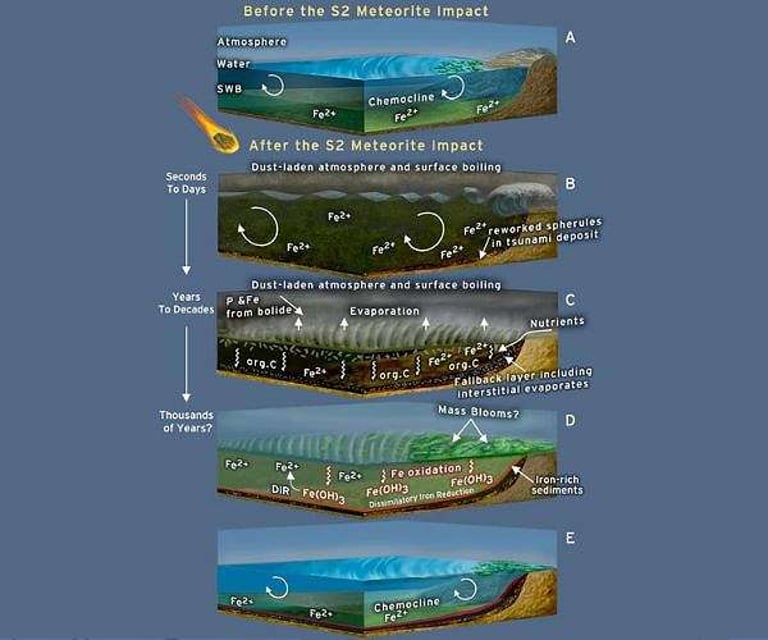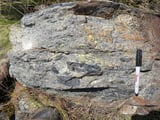Ancient Meteorite Impact: Catalyst for Early Life's Rapid Resurgence
October 21, 2024
A recent study led by Nadja Drabon, an assistant professor at Harvard University, reveals that a massive meteorite known as S2, estimated to be between 23 and 36 miles in diameter, impacted Earth over 3 billion years ago, potentially benefiting early life forms.
The S2 impact generated global chaos, including massive tsunamis and intense heat that boiled the ocean's surface, releasing vital nutrients like iron and phosphorus into the waters.
The outcomes of the S2 impact differed from the Chicxulub event, as life rebounded more quickly after the S2 impact, despite the initial devastation.
The findings of this research, published in the journal PNAS, indicate that early life was surprisingly resilient and flourished in the aftermath of such catastrophic events.
While the immediate aftermath of the impact had catastrophic effects on surface microorganisms due to darkness and ocean evaporation, deeper marine life was less affected and ultimately benefited from the upheaval.
After the dust settled, life rapidly recovered and thrived due to the influx of nutrients, which enhanced the growth of single-celled organisms.
Despite the initial destruction, bacterial populations, particularly iron-metabolizing bacteria, surged after the impact, spurred by the nutrients released and the mixing of ocean waters.
The study suggests that the impact provided essential nutrients like phosphorus and iron to the ocean, fostering bacterial blooms and promoting the recovery of life.
At the time of the S2 impact, Earth was largely barren, primarily composed of single-celled organisms like bacteria and archaea in nutrient-poor oceans described as 'biological deserts.'
Evidence of the impact includes geochemical signatures, spherical structures formed from melted rock, and sedimentary layers mixed with debris from the tsunami.
Ongoing research aims to explore how common environmental changes and biological responses were following other impact events in early Earth’s history.
Drabon compared the effects of the S2 impact on bacteria to oral hygiene, noting that while the impact killed many life forms, refugia allowed some to survive and recover quickly once conditions improved.
Summary based on 16 sources
Get a daily email with more Science stories
Sources

BBC News • Oct 21, 2024
S2 meteorite: What happened when a rock as big as London hit Earth?
BBC News • Oct 21, 2024
S2 meteorite: What happened when a rock as big as London hit Earth?
Yahoo News • Oct 21, 2024
Ancient meteorite was 'giant fertilizer bomb' for life on Earth